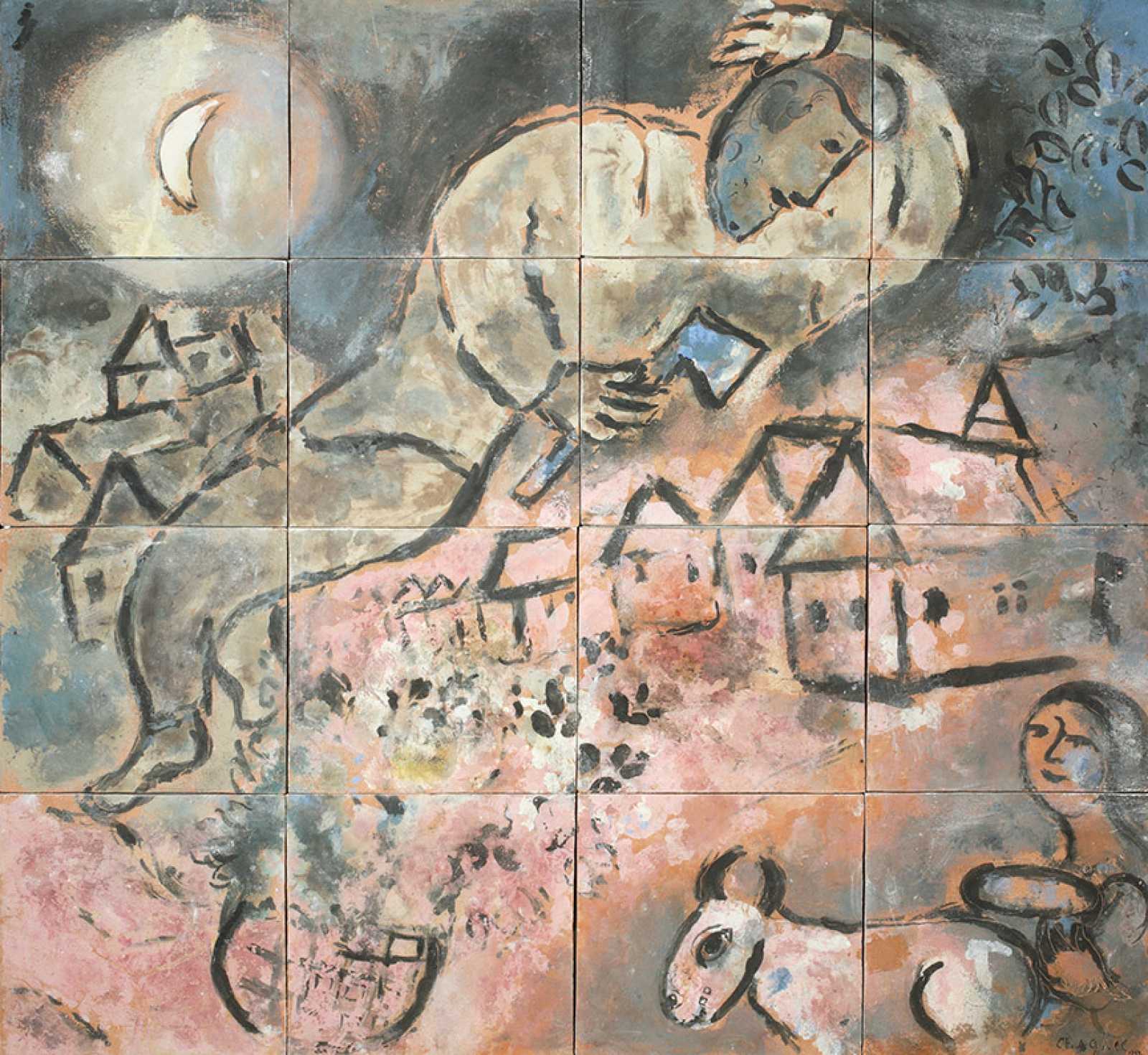Artwork of the Week
Marc Chagall
Marc Chagall was a Belorussian-born French artist whose work included painting, printmaking and theatre designs. He studied art in St. Petersburg and, funded by a St. Petersburg patron, moved to Paris in 1910. Influenced by poets like Guillaume Apollinaire and by painters like Chaim Soutine, Robert Delaunay, and Fernand Léger, Chagall synthesized various approaches to art such as Expressionism, Cubism, Symbolism, and Fauvism to become a member of the first generation of European modernists.
The Village, from the middle of Chagall’s career and one of his most expressive ceramic murals, freely associates motifs that recur in his art and illustrate his life-long love of poetic, folkloric fantasy. Across the middle of the painting is a row of village houses and a church, invoking Chagall’s early life in Vitebsk in present-day Belarus, then part of the Russian Empire. Over the village floats a large male figure in peasant garb, holding a hatchet, perhaps symbolic of the sacrifice of an animal. In the four corners are a girl with a bowl and a goat, a basket of flowers, a glowing crescent moon, and more flowers. The composition is loosely painted in soft blues and grays against a muted background that allows the warm highlights of the terracotta ground to emerge. The overall mood is dreamlike, mystical, and full of nostalgia.
Marc Chagall (Russian, 1887-1985), The Village, 1952, paint on ceramic tiles, 48 x 52 inches. Gift of Gwendolyn Weiner, 156-2009.
Two Grey Hills Rug
The Navajo rug developed under the influence of the owners of various trading posts who wielded significant control over weaving designs. By the 1900s, distinct regional styles emerged, taking on the names of either the region or trading post, such as Crystal or Ganado among others. Yet, as Teresa Wilkins writes in her 2008 book, Pattern of Exchange, such attribution denies the weaver’s expertise and creative role in determining the quality of the final product as exemplified in Navajo Two Grey Hills Rug, Storm Pattern.
The storm pattern is characterized by a strong central element connected by diagonal stepped lines extending to each of the four corners. Believed to have been developed by 1910, the geometric motifs of this design are associated with the all-important desert rainstorms and represent elements such as lightning bolts, water bugs, and the four sacred Navajo mountains. Two Grey Hills weavers are known for their finely woven textiles and use of natural shaded wools. The bold, complex design in this rug is achieved through the balance of black and white wool blended together to create grey, relieved with highlights of natural dyed tan wool.
Two Grey Hills Rug, Storm Pattern, c. 1940, handspun natural wool and synthetic over-dyed black, 92 x 49 ½ inches. Gift of Mrs. J. Beatty McCullough, A715-1974.


